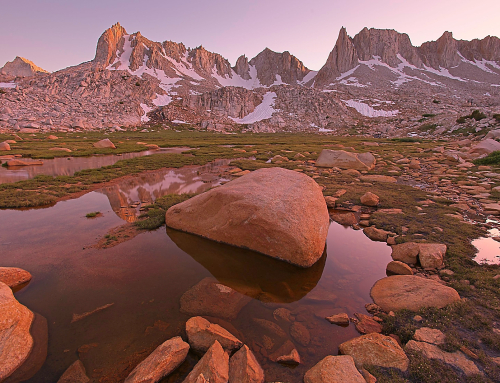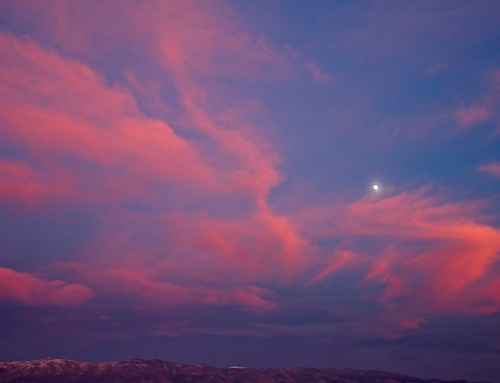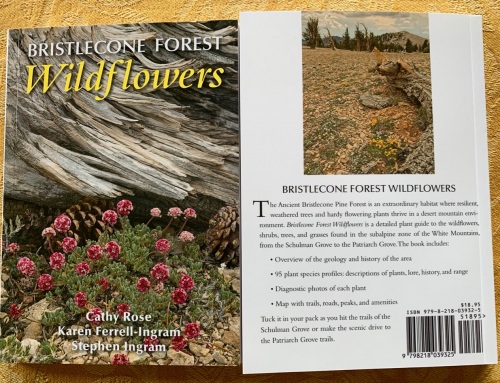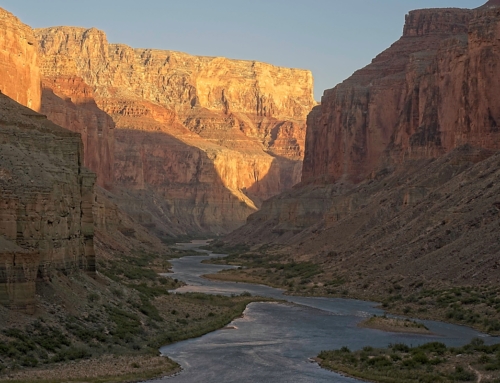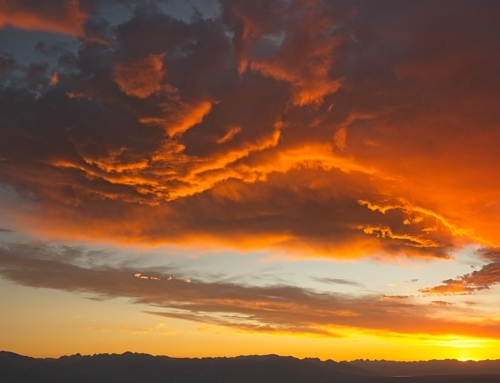The Eureka Dunes is a magical place. Depending on the season and the weather, it can be brutally hot, incredibly windy and cold, or warm, calm and quiet. I was hoping for the latter, and it worked out well. It had been a few years since I had driven the bumpy 10-mile road out there, but friends had been raving about the wildflowers there, and had posted photos on the web.

Acres of apricot globemallow (Sphaeralcea ambigua ambigua) grow on the apron east of Eureka Dunes.
Eureka Valley is in the northwestern section of Death Valley National Park, and is surrounded by three mountain ranges. Most visitors know the valley from its dunes, which are most appropriately thought of as a “mountain of sand.” The Eureka Dunes cover about five square miles, and at 680 feet, are the tallest dunes in California, and probably the oldest in the western U.S.

Eureka Dunes evening-primrose flowers (Oeonothera californica eurekensis), a state-listed rare and federally-listed endangered species, known only from Eureka Valley.
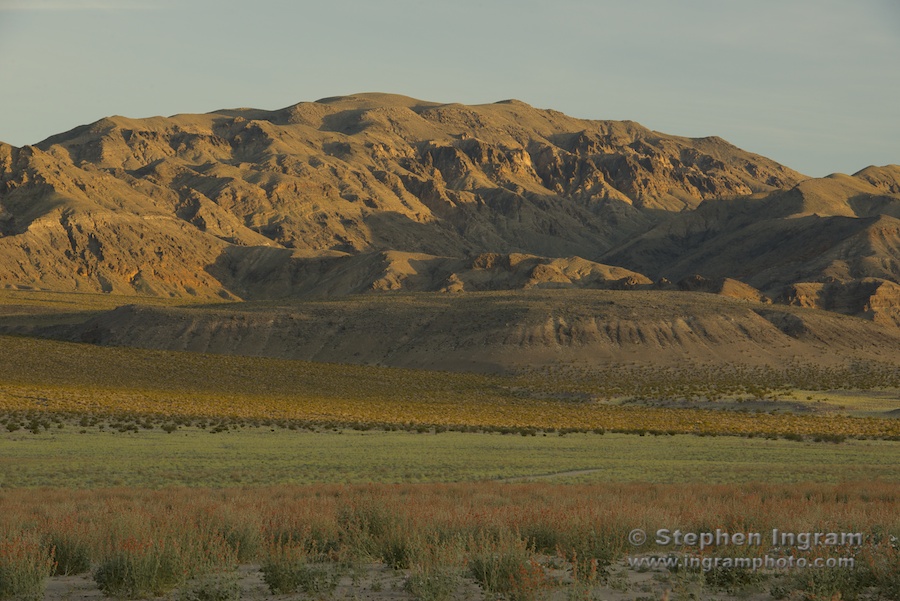
Apricot globemallow and desert-marigold below the southwestern edge of Last Chance Range.
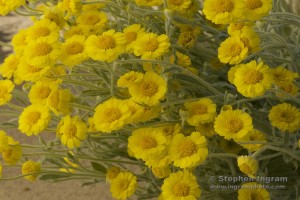
Desert-marigold flowers (Baileya pleniradiata).
Although many people think of sand dunes as hot, dry, inhospitable places worthy only of off-road vehicle riding, desert sand dunes are relatively moist habitats with a diverse array of unique plants and animals. Because sand is more porous than the finer-grained soils often surrounding dunes, water percolates down further, and is stored there like a sponge. Rainfall penetrates the sand, and the top dry layer insulates the water underneath from evaporating, leaving a reservoir to be tapped by sand dune plants, or psammophytes. Eureka Valley receives only 4-5 inches of rain in a “normal” year, but with sufficient early winter and continuing spring rains, the lower dune slopes may be bursting with wildflowers in the spring-as they are now.
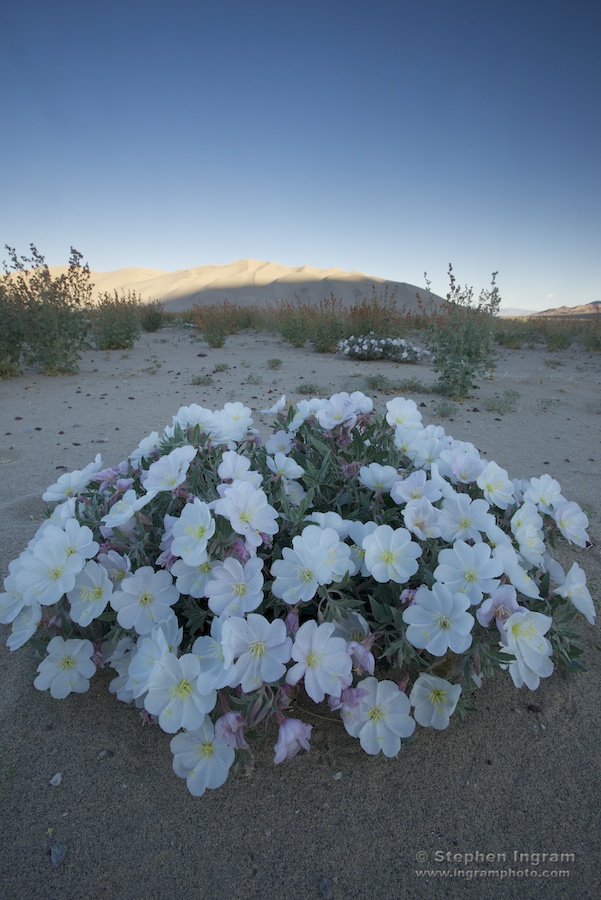
Eureka Dunes evening-primrose blooming as the morning sun hits the main dunes.
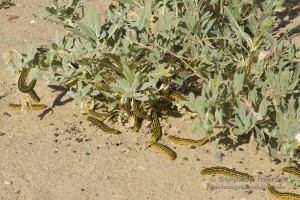
Caterpillars of white-lined sphinx moth (Hyles lineata), munching on evening-primrose.
With rains bringing flowers, the flowers attract insects. The white-lined sphinx acts as both pollinator (as an adult moth) and as an herbivore (as the larval caterpillar), devouring annual plants in great numbers.
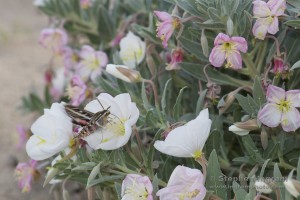
White-lined sphinx moth (Hyles lineata) visiting evening-primrose flowers at dusk.
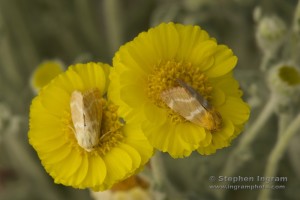
Flower moths (Schinia miniana) taking a snooze on desert-marigold flowers.
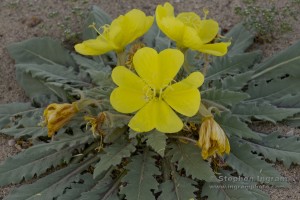
Spring or yellow evening-primrose (Oenothera primiveris bufonis) at Eureka Dunes.
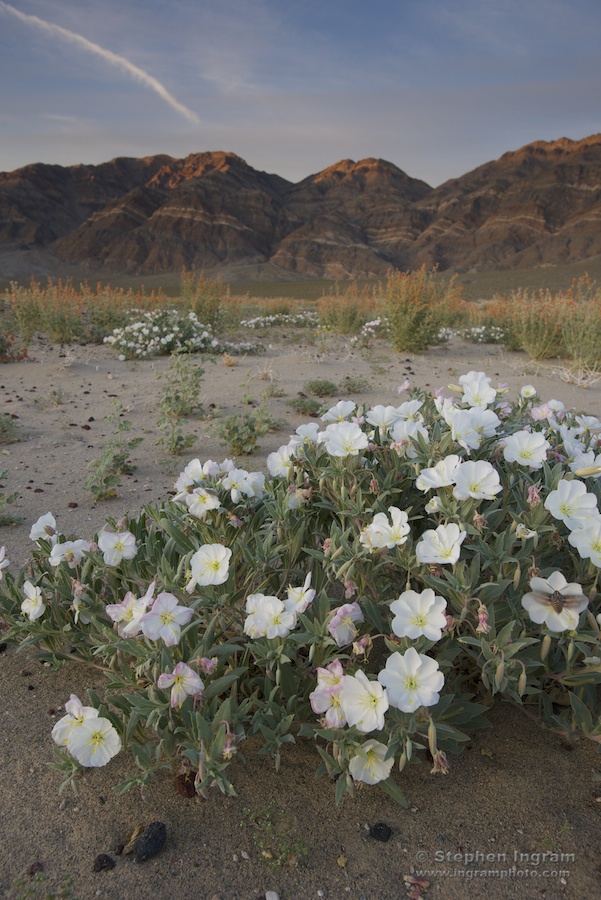
Eureka Dunes evening-primrose with a visiting sphinx moth (lower right) and last light on the Last Chance Range.
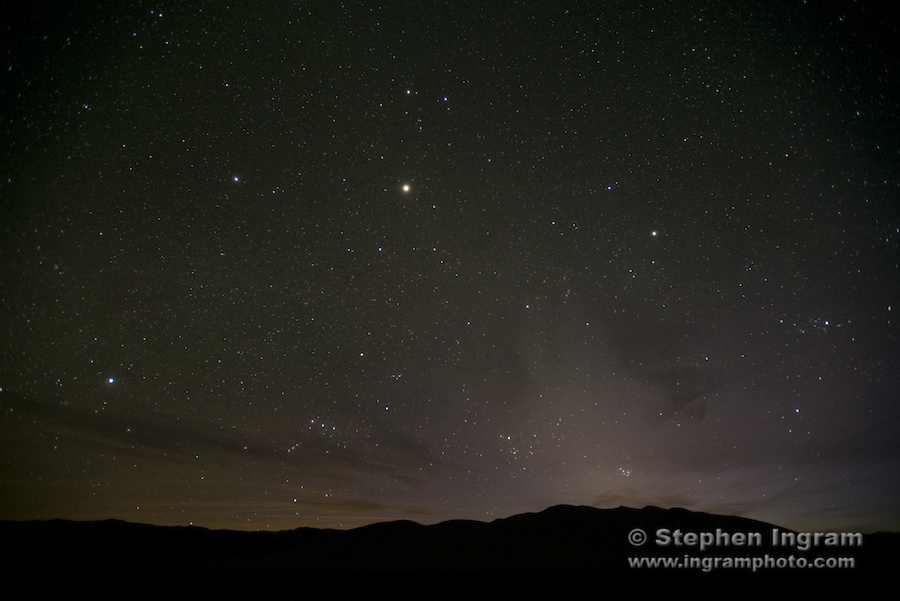
Western skies after sunset, with big city lights of Bishop visible above Eureka Dunes.

